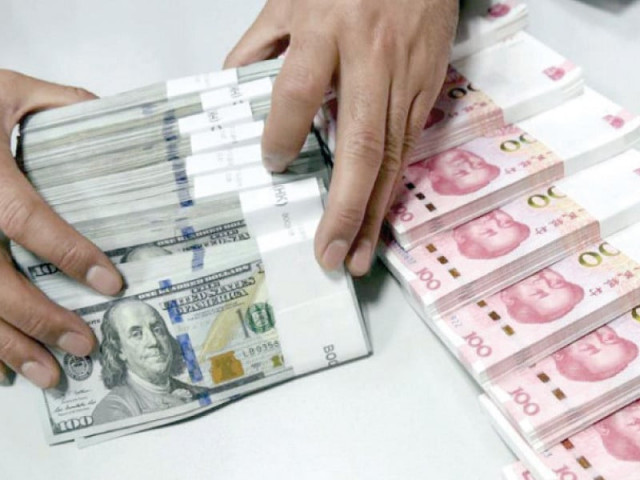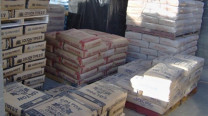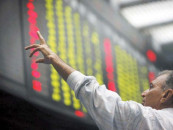Why devaluations of currency do not work
Devaluing country may not see any change in real output but will experience rise in inflation

The idea that devaluations make a country's goods more "competitive" is pure gold to governments. Enhanced "competitiveness", in turn, is believed to increase exports and reduce imports, thereby improving the country's trade account, employment, balance of payments and domestic budget.
Governments also believe that changing the value of their country's currency will, in some way, go unnoticed internally and externally and that market forces will somehow be blind to their currency interventions; that they can change the terms of trade at will. This theory is not true.
Devaluations per se lead to fully offsetting price changes. The increase in the price level of the devaluing country's currency less the increase in the price level of the countries' currencies against which the first currency was devalued will exactly equal the devaluation. All that devaluations will cause is offsetting inflation.
The devaluing country is instantaneously set upon inflation as domestic prices quickly rise to restore foreign products following the devaluation. Devaluations are everywhere and at all times offset by an identical rise in prices of goods as measured in the devaluing country's currency vis-a-vis prices in currencies against which the devaluation took place.
In policy as well as in academic circles, it is widely believed that changes in exchange rates cause changes in trade balances. Devaluations are believed to lead to improved trade balances, while revaluations are supposed to lead to worsened trade balances.
Of course, the reason people are so concerned about improving the trade balance is because of the old Keynesian equation of economic output, ie, output = consumption + investment + government spending + net exports. According to this equation, any improvement in trade balance leads directly to an increase in GDP.
Yet things are not that simple in the real world. Realistically, improving the trade balance is typically not correlated with a growing economy. Moreover, devaluations simply lead to a fully offsetting change in nominal prices and no change in the trade balance.
In other words, a devaluing country can expect no change in real output but will experience an increase in inflation.
But even within its own set of assumptions, the logic of devaluation doesn't hold. Surely, it looks as though they would want to import less because imports are now more expensive and domestic import substitutes would become more competitive.
This, in turn, will induce domestic producers to shift into production of import substitutes. But what about exports? Export goods, which are now relatively cheaper, become more attractive to consumers, both foreign and domestic, and less attractive to producers.
The higher price of import substitutes makes the production of these goods more profitable than the continued production of traditional export goods. Thus, supply shifts away from export goods at the same time domestic demand for export goods increases, leaving less export goods actually available for export.
Therefore, exports should decline on both supply and demand counts. From the standpoint of the devaluing country, the logic would point to fewer imports and fewer exports.
Devaluation is simply an attempt to change the prices of apples and other goods in one nation relative to another, by changing the relationship between the yardsticks in which those prices happen to be measured.
If markets are efficient, the real price of apples – relative to cars or hours of labour or other things of value – will not be affected. Nor will this real price be different, other things being equal, in a nation or another.
Thus, if the yardsticks change, the prices measured by them will have to change in a way that preserves the original relationship of real prices.
Or consider the same phenomenon from the point of view of one nation. If any country produces goods that it both trades and consumes domestically, then items sold for domestic consumption will not differ in price from items sold for foreign consumption.
Likewise, foreign imports into any country should also sell at the same price as the domestically produced import substitutes – both before and following devaluation. If these prices did not adjust in this manner, speculators could make virtually unlimited profits by purchasing goods in one country and selling them in another country.
In discussions of exchange rate intervention, often there is an implication that one good can sell at two different prices at the same time. The concept of undervalued and overvalued currencies can scarcely mean much else. This implication is diametrically opposed to the concept of profit maximisation.
Surely, profit maximisers sell to the highest bidders and buy from the lowest sellers, irrespective of nationality. Thus, if there exists simultaneously both domestic and foreign sellers or buyers, in an efficient market of goods, be they foreign-made or destined for foreign markets, will sell for the same price as their domestic counterparts – both before and after the exchange rate changes.
Given profit maximisation, one might expect the sole effect of devaluation to be completely offsetting inflation. The notion that somehow devaluation reduces the prices of all goods vis-a-vis foreigners and thereby leads to lower imports or greater exports is scarcely veiled resurrection of the discredited theory of absolute advantage.
If one extends such poor theory to its extreme, one could even assert that if a country devalues enough it will export everything and import nothing. It is difficult to imagine the ultimate result of a currency devaluation being anything other than fully offsetting inflation. This alternative view of devaluation predicts that devaluations do not improve a country's trade balance. Because nominal prices will adjust and real prices will remain unchanged, the devaluing nation will not gain a competitive advantage.
With the available data on the effects of devaluation, in fact, one would be hard pressed to find much of a relationship at all between exchange rate changes and trade balances.
Similarly, the alternative view predicts that a devaluing nation will suffer rapid inflation relative to the rest of the world. Its nominal price levels will have to increase rapidly to restore the original relationship of real prices with the real prices elsewhere in the world.
This effect, of course, does not depend on the actual flow of goods from one nation to another. One can also notice the precise opposite price effects when a country revalues.
While the price effects of exchange rate changes are more distinct using wholesale prices, they are still quite evident using the less volatile consumer prices. Even over long periods of time, the relationship between exchange rate changes and relative rates of inflation remains remarkably close.
A country is not a closed economy, nor is the economy of any other nation closed, must be acknowledged. The only closed economy is the world economy itself. This is a lesson we all would do well to learn.
The writer is a philanthropist and an economist based in Belgium



















COMMENTS
Comments are moderated and generally will be posted if they are on-topic and not abusive.
For more information, please see our Comments FAQ